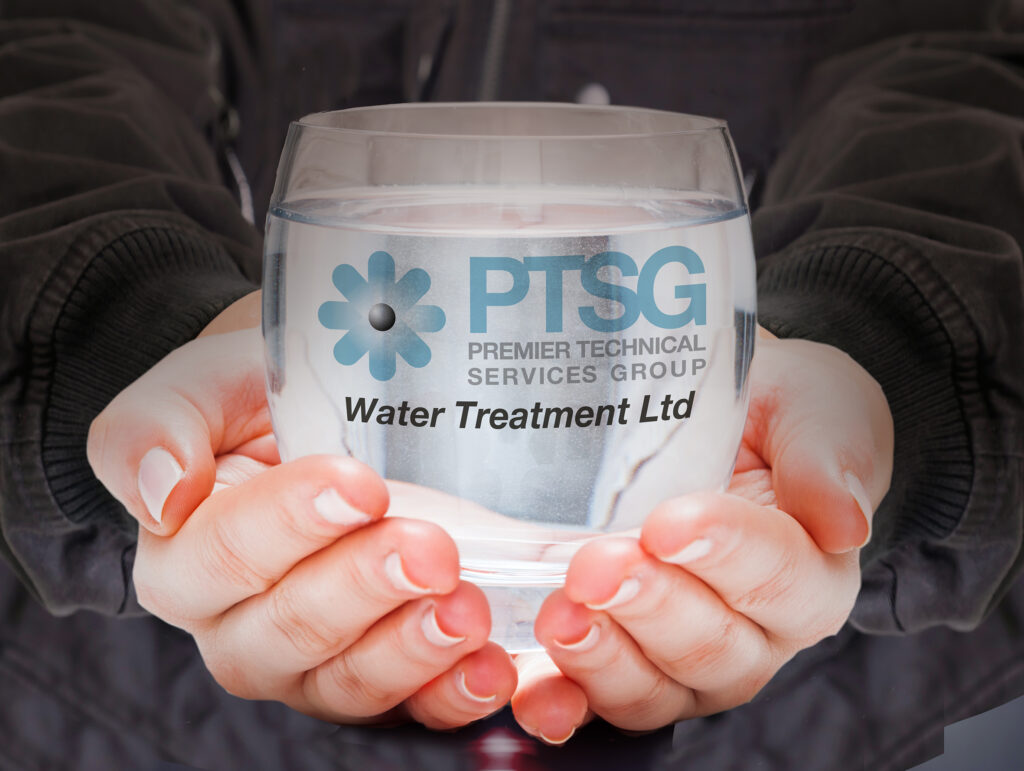Which methods actually work, and which are just money down the drain?
Let’s be honest, legionella testing isn’t exactly the most thrilling topic for your Monday morning meeting. But if you’re responsible for a building’s water safety (and the people using it), understanding which testing methods are worth your time and money isn’t just good business, it’s potentially life-saving.
At HCS Water Treatment, part of Premier Technical Services Group Ltd (PTSG), we’ve seen it all when it comes to legionella testing – from the cutting-edge to the questionable, and everything in between. After three decades in the water safety business, we’ve learned which methods deliver results and which ones leave you with nothing but a lighter wallet and a false sense of security.
Why Test at All? Isn’t Clean-Looking Water…Clean?
Before we dive into testing methods, let’s address the elephant in the room: Why bother testing when your water looks perfectly clear?
Here’s the uncomfortable truth: Legionella bacteria are microscopic ninjas. They’re invisible to the naked eye, don’t change the taste of your water and won’t turn it an alarming shade of green. Your building’s water system could be hosting a legionella convention with thousands of attendees, and you’d never know it, until someone falls ill.
Regular testing isn’t just a box-ticking exercise for compliance (though that’s important too). It’s your early warning system against an outbreak that could lead to serious illness, litigation, and the kind of publicity no business wants.
The Good: Testing Methods That Actually Earn Their Keep
1. Culture Method: The Gold Standard
Think of this as the grandparent of legionella testing – it’s been around forever, it’s reliable and it’s still the benchmark against which other methods are measured.
What it involves: Water samples are collected and then cultured in a laboratory on special growth media. After 7-10 days of incubation, any legionella colonies are counted.
Why it’s good:
- It’s the only method explicitly referenced in ACoP L8 guidance
- It can detect live, viable bacteria (the ones that can actually cause disease)
- It gives you a quantifiable result in colony-forming units (CFUs)
- It can identify different legionella species and serogroups
Drawbacks:
- Results take 7-10 days, not ideal for urgent situations
- It requires proper sampling technique (this isn’t a DIY job)
- Some legionella may be viable but not culturable under laboratory conditions
2. qPCR (Quantitative Polymerase Chain Reaction): The Speedster
This is the Formula 1 car of legionella testing, blindingly fast, but with its own limitations.
What it involves: This molecular method detects legionella DNA rather than live bacteria. It amplifies genetic material to detectable levels.
Why it’s good:
- Results in hours rather than days (typically 24-48 hours)
- Extremely sensitive, potentially detecting smaller amounts than culture methods
- Not affected by other bacteria that might compete during culturing
Drawbacks:
- Detects both living and dead bacteria (which could lead to false positives)
- Doesn’t distinguish between harmful and harmless strains as effectively
- Relatively expensive
- Not yet universally accepted as a standalone method in all regulatory frameworks
3. On-Site ATP Testing: The Quick Check
Think of this as your water system’s rapid health check, not the full medical, but a useful indicator.
What it involves: Adenosine triphosphate (ATP) is found in all living cells. This test measures biological activity in your water system, indicating general cleanliness.
Why it’s good:
- Results within minutes
- Simple to perform
- Good for monitoring cleaning effectiveness
- Can indicate when more thorough testing is needed
Drawbacks:
- Not specific to legionella (measures all biological activity)
- Cannot replace culture methods for compliance
- More of a screening tool than a definitive test
The Bad: Methods That Might Leave You Hanging
1. DIY Test Kits: The False Economy
These are the flat-pack furniture of the testing world. Seems simple enough until you’re halfway through and nothing fits together.
What they involve: Various retail kits promise quick, easy legionella detection without professional help.
Why they’re problematic:
- Often lack sensitivity compared to laboratory methods
- Sampling technique is critical and most people get it wrong
- Results can be difficult to interpret correctly
- May not be accepted as evidence of compliance
- Can create a dangerous false sense of security
2. Random, Infrequent Testing: The Gamble
This approach is like checking your smoke alarm once every three years and hoping for the best in between.
What it involves: Testing only when you remember or when there’s a problem.
Why it’s problematic:
- Legionella populations can establish and reach dangerous levels between tests
- Doesn’t account for seasonal variations or system changes
- Reactive rather than preventative approach
- Not compliant with regulations, which require regular monitoring
3. Testing Without Context: The Incomplete Picture
This is like getting your cholesterol checked without measuring your blood pressure or weight, you’re missing crucial parts of the health picture.
What it involves: Taking samples without considering temperature readings, system usage, or recent changes.
Why it’s problematic:
- Results can’t be properly interpreted without contextual information
- Misses critical system-wide indicators of risk
- Can lead to targeting the wrong issues while missing actual problems
The Bacteria: What You’re Actually Looking For
When testing for legionella, it’s crucial to understand what you’re hunting for:
Legionella pneumophila Serogroup 1: The Main Culprit
This is the notorious troublemaker responsible for most cases of Legionnaires’ disease. It’s like the celebrity criminal of the legionella world, the one that makes headlines.
Other Legionella pneumophila Serogroups: The Associates
Serogroups 2-16 can also cause disease, though less frequently. They’re the accomplices that don’t get as much press but are still dangerous.
Non-pneumophila Species: The Cousins
Other legionella species like L. longbeachae can cause illness too. They’re the extended family members who don’t visit as often but can still cause trouble.
The HCS Approach: Comprehensive Testing That Works
At HCS Water Treatment, we don’t believe in one-size-fits-all testing. Our approach combines:
- Risk-Based Sampling: We target high-risk areas first, based on temperature, usage patterns, and system design.
- Multiple Methods: We use culture testing as our backbone but supplement with rapid methods when needed for immediate risk assessment.
- Contextual Analysis: We don’t just look at test results in isolation we consider the entire water system’s health, maintenance history, and usage patterns.
- Continuous Monitoring: We implement regular testing schedules based on your specific risk profile, not generic timeframes.
- Technology-Enhanced Tracking: Our ZetaSafe Dashboard gives you real-time visibility of your compliance status, making it easy to monitor and manage water safety.
Making Sense of Your Results: What the Numbers Mean
Test results without proper interpretation are like a foreign language film without subtitles you might get the general idea, but you’ll miss the important details.
Understanding Colony Counts
Culture test results are typically reported as colony-forming units per litre (CFU/L). But what do these numbers actually mean?
- <100 CFU/L: Generally considered low risk for most systems
- 100-1,000 CFU/L: Medium risk, review control measures and retest
- >1,000 CFU/L: High risk, immediate action required, including possible system disinfection
But here’s the crucial bit: these thresholds aren’t universal. The acceptable level depends on your system type and the vulnerability of users. A count of 100 CFU/L might be acceptable in some settings but completely unacceptable in healthcare facilities serving immunocompromised patients.
Beyond Testing: The Complete Protection Picture
Even the best testing regimen is just one piece of the protection puzzle. Effective legionella control requires:
- Regular risk assessments to identify and address potential breeding grounds
- Proper temperature control to keep hot water hot and cold water cold
- Routine maintenance to prevent scale, sediment, and biofilm buildup
- Regular flushing of little-used outlets to prevent stagnation
- Staff training so everyone understands their role in water safety
The Bottom Line: Invest Wisely in Testing
When it comes to legionella testing, cutting corners isn’t just false economy, it’s gambling with health and safety. Professional, systematic testing might seem like an expense, but it’s actually an investment in protection, for your building users, your reputation, and your peace of mind.
Remember: the most expensive test is the one that gives you a false sense of security. The truly cost-effective approach is the one that actually catches problems before they become crises.
Ready to implement testing that actually works? Contact HCS Water Treatment today on 0141 212 7247 or email us at hello@hcsuk.org for expert advice tailored to your specific water system. Because when it comes to legionella, what you don’t know absolutely can hurt you.


